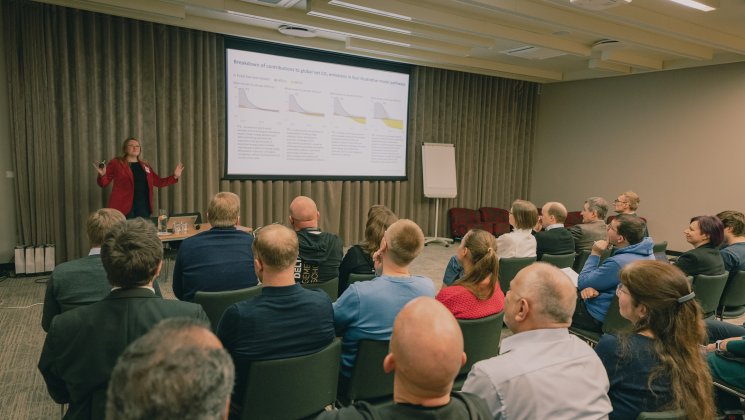-
Faculty of Arts and HumanitiesJakobi 2, r 116-121 51005 Tartu linn, Tartu linn, Tartumaa ESTJakobi 2 51005 Tartu linn, Tartu linn, Tartumaa ESTJakobi 2, IV korrus 51005 Tartu linn, Tartu linn, Tartumaa ESTJakobi 2, III korrus, ruumid 302-337 51005 Tartu linn, Tartu linn, Tartumaa ESTÜlikooli 16 51003 Tartu linn, Tartu linn, Tartumaa ESTLossi 3 51003 Tartu linn, Tartu linn, Tartumaa ESTÜlikooli 18 50090 Tartu linn, Tartu linn, Tartumaa ESTPosti 1 71004 Viljandi linn, Viljandimaa ESTJakobi 2 51005 Tartu linn, Tartu linn, Tartumaa ESTJakobi 2 51005 Tartu linn, Tartu linn, Tartumaa ESTFaculty of Social SciencesLossi 36 51003 Tartu linn, Tartu linn, Tartumaa ESTJakobi 5 51005 Tartu linn, Tartu linn, Tartumaa ESTLossi 36, ruum 301 51003 Tartu linn, Tartu linn, Tartumaa ESTNarva mnt 18 51009 Tartu linn, Tartu linn, Tartumaa ESTNäituse 2 50409 Tartu linn, Tartu linn, Tartumaa ESTNäituse 20 - 324 50409 Tartu linn, Tartu linn, Tartumaa ESTLossi 36 51003 Tartu linn, Tartu linn, Tartumaa ESTRaekoja plats 2 20307 Narva linn, Ida-Virumaa ESTRingi 35 80012 Pärnu linn, Pärnu linn, Pärnumaa ESTLossi 36 51003 Tartu linn, Tartu linn, Tartumaa ESTLossi 36 51003 Tartu linn, Tartu linn, Tartumaa ESTFaculty of MedicineRavila 19 50411 Tartu linn, Tartu linn, Tartumaa ESTBiomeedikum, Ravila 19 50411 Tartu linn, Tartu linn, Tartumaa ESTNooruse 1 50411 Tartu linn, Tartu linn, Tartumaa ESTL. Puusepa 1a 50406 Tartu linn, Tartu linn, Tartumaa ESTL. Puusepa 8 50406 Tartu linn, Tartu linn, Tartumaa ESTRavila 19 50411 Tartu linn, Tartu linn, Tartumaa ESTUjula 4 51008 Tartu linn, Tartu linn, Tartumaa ESTRavila 50411 Tartu linn, Tartu linn, Tartumaa ESTRavila 19 50411 Tartu linn, Tartu linn, Tartumaa ESTFaculty of Science and TechnologyVanemuise 46 - 208 51003 Tartu linn, Tartu linn, Tartumaa ESTNarva mnt 18 51009 Tartu linn, Tartu linn, Tartumaa ESTRiia 23b/2 51010 Tartu linn, Tartu linn, Tartumaa ESTRavila 14a 50411 Tartu linn, Tartu linn, Tartumaa ESTNarva mnt 18 51009 Tartu linn, Tartu linn, Tartumaa ESTRiia 23, 23b - 134 51010 Tartu linn, Tartu linn, Tartumaa ESTObservatooriumi 1 61602 Tõravere alevik, Nõo vald, Tartumaa ESTNooruse 1 50411 Tartu linn, Tartu linn, Tartumaa ESTJ. Liivi tn 2 50409 Tartu linn, Tartu linn, Tartumaa ESTVanemuise 46 51003 Tartu linn, Tartu linn, Tartumaa ESTVanemuise 46 51003 Tartu linn, Tartu linn, Tartumaa ESTArea of Academic SecretaryLossi 3 51003 Tartu linn, Tartu linn, Tartumaa ESTUppsala 6, Lossi 36 51003 Tartu linn, Tartu linn, Tartumaa ESTArea of Head of FinanceÜlikooli 17 51005 Tartu linn, Tartu linn, Tartumaa ESTArea of Director of AdministrationÜlikooli 18A (III korrus) 51005 Tartu linn, Tartu linn, Tartumaa ESTÜlikooli 18, ruumid 102, 104, 209, 210 50090 Tartu linn, Tartu linn, Tartumaa ESTArea of RectorArea of Vice Rector for Academic AffairsUppsala 10 51003 Tartu linn, Tartu linn, Tartumaa ESTÜlikooli 18b 51005 Tartu linn, Tartu linn, Tartumaa ESTArea of Vice Rector for ResearchW. Struve 1 50091 Tartu linn, Tartu linn, Tartumaa ESTArea of Vice Rector for DevelopmentNarva mnt 18 51009 Tartu linn, Tartu linn, Tartumaa ESTVanemuise 46 51003 Tartu linn, Tartu linn, Tartumaa ESTLossi 25 51003 Tartu linn, Tartu linn, Tartumaa EST
Laura Helena Kivi will defend her doctoral thesis „Regional labour markets and assimilation of foreign labour force“

On 13 December at 10:15 Laura Helena Kivi will defend her doctoral thesis „Regional labour markets and assimilation of foreign labour force“ for obtaining the degree of Doctor of Philosophy (in Economics)
Supervisor:
Professor emeritus Tiiu Paas, University of Tartu
Opponents:
Associate Professor Matti Sarvimäki, Aalto University (Finland)
Professor Kadri Männasoo, Tallinn University of Technology (Estonia)
Summary
The focus of this thesis is on the regional labour markets of the European Union, their spatial interactions, and the assimilation of the foreign labour force in the host country's labour market, using the example of Estonia. Foreign labour force constitutes a significant share of the total labour force in the regional labour markets. In 2021, 13% of all the labour force in the European Union were foreign-born. While foreign-born form a substantial share of the total labour force, their labour market outcomes tend to be inferior to those of the native-born. Furthermore, labour migration movements and commuting create connections between neighbouring regional labour markets, known as spatial interactions, which explain a significant share of the variation in the regional labour market indicators. The thesis investigates several important questions. First, how do regional labour markets affect each other through spatial interactions. Second, how do the foreign labour force and their descendants assimilate to the regional labour market in the long term. Last, how is the assimilation of foreign labour force and their descendants impacted by the local language skills. The thesis leads to several interesting conclusions. First, the analysis of spatial interactions leads to the conclusion that significant spatial dependence exists between European regional labour markets. Cooperation effects dominate meaning that in general regions benefit from the employment rate growth of the neighbouring regions. The increases in the labour mobility in EU have been accompanied by increases in the strength of spatial interactions. Second, the analysis of the intergenerational transmissions for immigrant families indicates that besides the transmission of human capital, other channels, such as the transmission of common values, common contact networks and neighbourhood effects could be important aspects of intergenerational earnings transmissions. The relative intergenerational earnings mobility is found to be around the same magnitude in Estonia for immigrant and native families, however the absolute mobility is lower for the immigrant families. Last, the analysis of the role of local language training shows that language training helps unemployed non-natives to find employment but does not lead to wage premium.
The defence fill be held in Narva Rd 18–1018 and online
Thesis: https://hdl.handle.net/10062/94387

Laura Helena Kivi will defend her doctoral thesis „Regional labour markets and assimilation of foreign labour force“
Read more similar news






